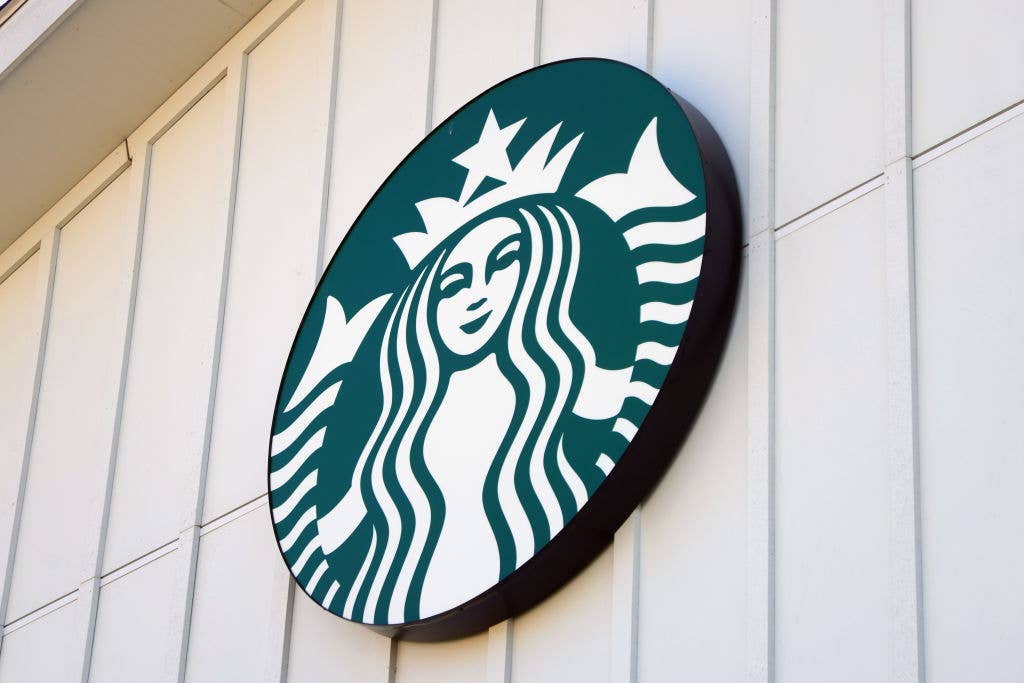
Cruelty-Free Lobster? Cultivated Seafood May Be Landing at a Store Near You
While nobody knows exactly how to classify cultured meat yet – is it vegan? – new "lab-grown" meat and seafood options are getting closer to being commercially available in the US, which means companies are lining up to develop products that are exact cellular replicas of animal products that are made without the need to raise or slaughter cows, chicken, pigs, fish, and now, lobsters.
These innovative sources of alternative protein will be commercially available sooner than people expect as federal regulation is put in place that will allow sellers to market the foods to consumers, as is already happening around the globe in Singapore and soon in Qatar, but not in the US – just yet. Lab-grown meat is reminiscent of vintage science fiction stories, but currently, UPSIDE Foods is working to make this a reality. The leading cultured meat company just announced that it acquired Cultured Decadence, expanding its portfolio of cultivated meat, poultry, and seafood products as it awaits regulatory approval in the United States.
By acquiring Cultured Decadence, UPSIDE will assist the company in developing its signature cultivated lobster, scallops, and seafood products. Founded in 2020, Cultured Decadence set out to develop low emissions, sustainable alternatives to lobster, one of the most environmentally taxing seafood products to produce. UPSIDE’s involvement will allow the company to accelerate production, using the cultured meat company’s facilities to perfect the lobster replication process.
“Seafood has a rich and delicious culinary tradition that makes it a favorite across the globe. Cultivated seafood also has a tremendous potential to benefit the world,” Founder and CEO of UPSIDE Foods Dr. Uma Valeti said. “Cultured Decadence’s technology is incredibly promising, and their team is filled with passionate, smart individuals who want to make our favorite food a force for good.”
Cultured Decadence recognized the dangers posed by the worldwide fishing industry, and decided to dedicate its resources to cell-based alternatives rather than plant-based protein. The cultured seafood will provide customers with sustainable replications of their favorite seafood products without animal involvement and with minimal environmental damage. Current estimates claim that crustacean fishing accounts for up to 94 percent of predicted increases in emissions in the seafood sector.
“We’re thrilled to welcome the Cultured Decadence team to the UPSIDE family and are excited that the scientific, technological, and production infrastructure we have built over many years can help accelerate the mission impact of this team,” Valeti said.
UPSIDE is pioneering the cultivated meat industry within the United States, creating cell-based meat products that range from chicken to beef. Although the company has not seen US regulatory approval, its expansion is meant to combat climate change by undercutting the meat and dairy industries worldwide. To accompany plant-based protein, the cultivated market aims to persuade people to eat more sustainably that feel adverse to adopting plant-based diets.
“We’ve long admired UPSIDE’s innovation and leadership in the cultivated meat industry,” Co-founders of Cultured Decadence said John Pattison and Ian Johnson released in a statement. “UPSIDE’s unparalleled R&D and scale-up capabilities will significantly accelerate the commercialization of cultivated delicious, sustainable, and humane seafood.
UPSIDE’s Cultivated Meat Empire
Preparing for its commercial debut, UPSIDE opened its largest production facility encrusted the Engineering, Production & Innovation Center (EPIC) in California last year. The aptly named facility holds enough of the company’s proprietary custom-made cultivators to produce 50,000 pounds of cultivated meat a year. The company predicts that its facility will eventually have the potential to produce around 400,000 pounds annually.
UPSIDE is looking to enhance its production capabilities as it acquires new brands and develops new cultivated protein products. Consumer interest in cultivated meat is also rising, giving the company reason to prepare for widespread demand. The cultured meat market is expected to reach $2.7 billion by 2030. The industry would register an outstanding 95.8 percent CAGR from 2022 to 2030.
“Uma and his team’s “Big Tent” mentality resonates deeply with our team, and we are incredibly proud and humbled to be joining such a talented group with a deeply shared sense of mission, purpose, and commitment to doing the right thing,” the Cultured Decadence founders continued. “There’s nobody else we’d rather join to build the future of food.”
Last year, UPSIDE also partnered with the acclaimed Chef Dominique Crenn to visualize how cultured meat can be introduced to menus following regulatory approval. The Michelin-star chef–responsible for the renowned San Francisco eatery Atelier Crenn – announced that it would introduce meat back to her menus for the first time since 2018. The chef believes UPSIDE’s cultivated meat upholds her values regarding sustainable and ethical food sourcing.
Cultivated Meat is Breaking Records
The cultivated meat industry’s extraordinary growth is being fueled by several companies worldwide including Eat Just and Future Meat Technologies (FMT). While UPSIDE and Crenn put cultivated meat on the table within the United States, Eat Just’s GOOD Meat brand launched its cell-based chicken in Singapore in 2020. GOOD Meat has currently raised $267 million in investments, fueling its cultivated chicken production and allowing it to begin creating new alternative proteins.
Briefly, GOOD Meat became the most funded cultivated meat company on the market, but nearly two months following its September funding round, Israel-based Future Meat secured a whopping $347 million during its Series B funding round. Led by Tyson’s investment arm Tyson New Ventures, Future Meat closed the biggest funding round in the industry’s history.
“We are incredibly excited by the massive support of our global network of strategic and financial investors,” Founder and President of FMT Yaakov Nahmias said in a statement. “This financing consolidates Future Meat’s position as the leading player in the cultivated meat industry, just three years after our launch. Our singular technology reduced production costs faster than anyone thought possible, paving the way for a massive expansion of operations.”
Top 10 Sources of Plant-Based Protein According to a Nutritionist
1. Seitan
Protein: 21 grams in ⅓ cup (1 ounce) Seitan isn’t as popular as other proteins, but it should be! Made from wheat gluten, its texture resembles ground meat. It’s often used in pre-made veggie burgers or meatless nuggets. Seitan has a savory taste, like mushrooms or chicken, so it works well in dishes that call for an umami flavor. With a hearty texture, seitan can be the star of practically any vegan main dish. Add it to stir-fries, sandwiches, burritos, burgers, or stews. Like tofu, seitan will take on the flavor of any marinade or sauce.
2. Tempeh
Protein: 16 grams in 3 ounces If you like a protein with a bit of bite, add tempeh to your list. Made from fermented soybeans, tempeh has a slightly nutty flavor and is pressed into a block. Most varieties include some sort of grains, such as barley or millet. Not only is tempeh a plant-based source of protein, but the fermentation process also creates good-for-your-gut probiotics. You can cut tempeh right off the block and use it as the base for a sandwich or pan-fry it with some sauce. Or, crumble, heat, and make it the star of your next taco night.
3. Lentils
Protein: 13 grams in ½ cup cooked Lentils come in multiple varieties--red, yellow, green, brown, black. Regardless of the type lentils are small but mighty nutritional powerhouses. They pack a good amount of protein as well as iron, folate, and fiber. When cooked, brown lentils retain their texture and can be the base for a grain bowl or make a hearty substitute for ground meat in meatballs, lasagna, tacos or Bolognese. Red lentils are a bit softer and make a nice add-in for a hearty soup, chili, or stew.
4. Hemp Seeds
Protein: 10 grams in 3 tablespoons Hemp seeds are a tender and nutty seed, derived from the hemp plant. They contain good amounts of omega-3s, iron, folate, magnesium, phosphorus, and manganese. They are also a solid source of both soluble and insoluble fiber, which helps to keep your digestive tract healthy and humming. Because they pack a double whammy of protein and healthy fats, hemp seeds can help satisfy hunger, preventing those embarrassing stomach growls as you slog your way to your lunch break. Add them to your morning smoothie or sprinkle them on top of yogurt, oatmeal, or even a salad.
5. Tofu
Protein: 9 grams in 3 ounces (⅕ of a block) Made from coagulated soybeans, tofu is the most popular plant-based protein. Soy is one of the only meatless "complete" proteins, meaning that it contains all of the essential amino acids that the body can’t make but needs for muscle and immune function. With 15% of your daily calcium needs, tofu is also a good replacement for dairy.
6. Edamame
Protein: 9 grams of protein in ½ cup This sushi appetizer is a nutrient powerhouse, so eat it anytime. Edamame is really just another name for soybeans in their pods. Let’s list off some stats--a small ½-cup serving of edamame has 9 grams of protein, 15% of your daily vitamin C, 10% of your daily iron and 16% of your daily fiber. Keep a bag of edamame in your freezer to serve as a fun-to-eat side dish or opt for the shelled variety to toss into salads or a grain bowl.
7. Quinoa
Protein: 8 grams per cup (cooked) Quinoa is an ancient grain and since it's gluten-free a great choice for anyone avoiding gluten. Add it to your burger recipe to create filling texture, or instead of meat in your taco or burrito. Quinoa is among the healthiest foods on the planet, delivering phytonutrients that have anti-inflammatory qualities, so keep it in your pantry for any meal that needs a filling grain. Just remember to soak it and rinse before cooking to get rid of any bitter taste.
8. Black Beans
Protein: 7 grams in ½ cup (canned) Eating beans on the regular might as well be a prerequisite for a plant-based diet. Not only are canned black beans inexpensive, but they also contribute 10% of your daily iron and 25% of your daily fiber to your diet. For less than $1 a can, beans can be the star of tacos, quesadillas, salads, soups, burgers, or dips.
9. Amaranth
Protein: 6 grams in ⅔ cup (cooked) Chances are you’ve never cooked amaranth. But you should, since this tiny, gluten- free grain is packed with almost 30% of your daily fiber and 20% of your daily iron. Cook it like a traditional grain to yield a soft, porridge-like texture. Many people add amaranth to other a hot breakfast cereal mixture, like oats and quinoa. It also pops like popcorn. Toss it in a pot with some oil and wait for it to pop up into a nutritious snack.
10. Peas
Protein: 5 grams in ⅔ cup If peas were one of your most hated veggies as a kid, it’s time to give them another chance. These green beans are a great low-calorie protein to keep in your freezer. Sure, they don’t always taste great when steamed or microwaved (who wants to eat mushy, overcooked peas?), but they do blend well into a yummy puree that can be slathered on toast. To amp up the flavor, add some lemon juice or mint to your mix before you blend.
More From The Beet






